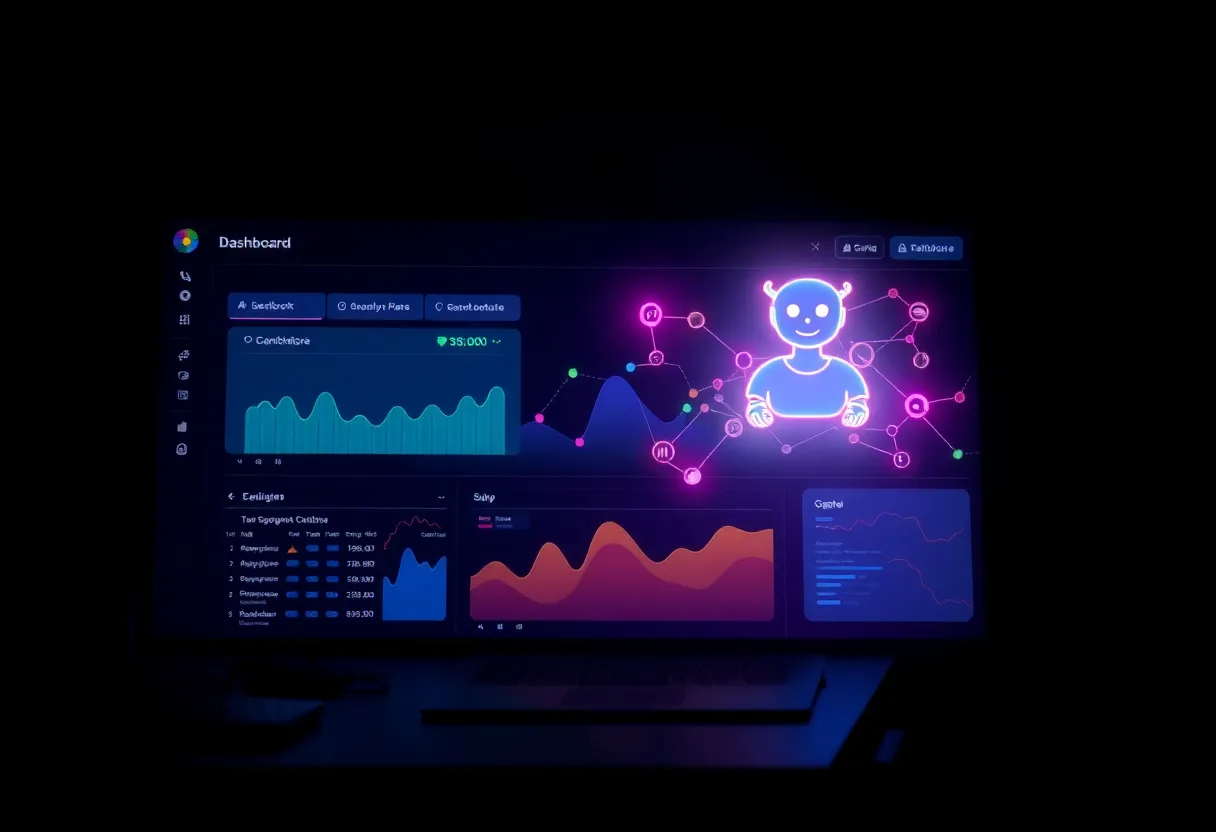If you reply to leads a few hours late, you’ve probably already lost them. Automated SMS follow‑up helps you respond in seconds, keep conversations going, and do it all within TCPA and carrier rules. This practical guide shows you how to set up timing, templates, metrics, and compliance so you can turn more inquiries into paying customers.
Try Small Business Chatbot — free demo
82% of consumers check their text notifications within five minutes, and 71% want the ability to text a business back (SimpleTexting, 2025). See the 2025 SMS report.
Why automated SMS follow‑up lifts response rates
Speed to lead (in seconds, not hours)
SMS lets you reply the moment a form is submitted, a call is missed, or a cart is abandoned. Faster replies correlate with higher conversion because prospects are still in “decision mode.” CTIA notes Americans exchange more than two trillion texts annually and consider texting a trusted, convenient channel—part of why engagement is so high (CTIA, 2025). CTIA: Protecting You From Spam Texts.
Two‑way conversations customers prefer
People want to ask follow‑up questions, reschedule, or confirm details by text. In 2025 surveys, most consumers check texts within minutes and say two‑way texting with businesses improves convenience and satisfaction (SimpleTexting, 2025). Consumer texting behaviors.
Compliance essentials (TCPA, CTIA, 10DLC)
This section is general information for U.S. businesses as of October 2, 2025, not legal advice. Consult counsel for your situation.
1) TCPA: consent, timing, and opt‑out
- Consent: For commercial texts to mobile numbers, the FCC explains you need prior express written consent; non‑commercial/informational messages generally require prior consent but not necessarily written (see FCC consumer guide). Include clear disclosures and keep records. FCC consumer guidance.
- Quiet hours: Telemarketing solicitations are restricted before 8 a.m. and after 9 p.m. local time. Treat marketing texts the same to avoid complaints.
- Easy opt‑outs: Honor STOP/UNSUBSCRIBE immediately. The FCC has affirmed that sending a one‑time confirmation of an opt‑out (no marketing content) is allowed; recent consent‑revocation rule timing has been partially delayed for some requirements.
- AI voice/text considerations: The FCC confirmed AI‑generated voices are considered “artificial or prerecorded” under the TCPA, requiring consent when used in calls; treat related automations cautiously.
- Regulatory shifts: A December 2024 FCC “one‑to‑one” consent interpretation impacting lead‑gen was vacated by the Eleventh Circuit in January 2025, and a June 20, 2025 Supreme Court ruling reduced deference to FCC TCPA interpretations—expect evolving case law.
2) CTIA messaging best practices
Follow industry norms: get explicit opt‑in, use clear sender identification, include HELP/STOP instructions in messages, and avoid prohibited content. Carriers use these principles to keep messaging trusted and may filter non‑compliant traffic (CTIA, 2025). CTIA best‑practice overview.
3) 10DLC: register your brand and campaigns
- What it is: U.S. carriers require A2P messages sent over local 10‑digit numbers to be registered via The Campaign Registry (TCR). Your messaging provider typically handles this, but you supply brand identity, consent language, and sample messages. The Campaign Registry.
- Deadline reality: Carriers ended support for unregistered 10DLC traffic industry‑wide on December 1, 2024; unregistered messages are blocked or heavily filtered. Carrier cutoff explanation.
- Capture opt‑in with an unchecked checkbox and clear disclosures.
- Show sender name, purpose, message frequency, rates may apply, and STOP/HELP instructions.
- Don’t text for marketing outside 8 a.m.–9 p.m. local time.
- Register 10DLC Brand + Campaign(s) with your provider; keep samples accurate.
- Log consent and opt‑outs; suppress immediately across all campaigns.
- Audit templates quarterly for compliance and clarity.
How to set up automated SMS follow‑up
- Map your triggers. Common triggers: new lead form, missed call/voicemail, chat handoff, abandoned cart, quote request, no‑show, or post‑purchase check‑in.
- Write short, human messages. 1–2 sentences plus one clear action (reply, book, confirm). Avoid jargon and walls of text.
- Build a 2–3 step sequence. Example: instant confirmation, T+2 hours nudge, T+48 hours final check‑in with an alternative (call or email).
- Add smart routing. If a customer replies with intent (e.g., “ready to schedule”), notify a human or auto‑book using your calendar link.
- Respect preferences. Include STOP/HELP in the first message or at least once in the thread, and honor quiet hours.
Timing and cadences that lift replies
There’s no one “magic time,” but mid‑morning (9 a.m.–12 p.m.) and early evening (5–9 p.m.) often perform well; many teams see strong click‑through on Thursdays and Fridays, with weekends reserved for time‑sensitive offers (Infobip, 2024). Timing insights.
Suggested follow‑up cadence (new lead)
- T+0 min: Instant confirmation + quick qualifier question.
- T+2 hours: Nudge with value (“I can hold a spot at 3:30 pm — want it?”).
- T+48 hours: Last‑chance check‑in + alternate channel (call or email).
Suggested follow‑up cadence (missed call)
- T+1 min: “Sorry we missed you” + easy reply options (1, 2, 3).
- T+1 day: Helpful resource or answer to the most likely question.
- T+3 days: Close the loop: “Still want help? Reply YES.”
Copy‑and‑paste SMS templates
Tip: Keep messages under 320 characters. Use one link max, and always include an identifiable sender name.
New lead (instant)
Hey [First], it’s [Name] at [Business]. Got your request for [service]. Quick q: are you hoping for [day/time] or [alt]? Reply 1 or 2 and I’ll lock it in (STOP to opt out).
Missed call
Sorry we missed you! Want me to call back now, send pricing, or book a visit? Reply 1=Call, 2=Pricing, 3=Book. –[Business] (STOP to opt out)
No‑show rescue
Can we reschedule your [service] from earlier today? I can do tomorrow at 11:30 a.m. or 4:15 p.m. Which works? –[Business] (STOP to opt out)
Quote follow‑up
Hi [First], it’s [Name] at [Business]. Any questions on the quote? If you’re ready, reply YES and I’ll send the deposit link. (STOP to opt out)
Review request
Thanks again! Mind sharing a quick review? It helps other locals find us. Reply REVIEW and I’ll text the link. –[Business] (STOP to opt out)
Post‑purchase check‑in
How did [product/service] work out? If you need anything, just reply here and I’ll jump in. –[Name], [Business] (STOP to opt out)
What to track and how to improve
| Metric | Target/Tip |
|---|---|
| Response rate | 20–45% is common for timely, relevant follow‑ups; ask one simple question. |
| Click‑through rate | Many SMBs report 21–35% CTR on opted‑in lists; keep one link per message. |
| Opt‑out rate | Aim ≤2% per campaign; reduce frequency or improve relevance if higher. |
| Time‑to‑first‑reply | Under 5 minutes is excellent for inbound leads. |
Helpful tools and integrations
Automating follow‑ups is easiest when your chatbot, phone system, forms, and CRM talk to each other. With Small Business Chatbot, you can capture leads on your site, answer FAQs instantly, and trigger texts when someone books, replies, or misses a call.
- Two‑way SMS + chat + voice: Route hot conversations to a human, or let the AI complete the task (book, qualify, collect payment).
- One‑click integrations: Connect your CRM or calendar to keep contacts and tasks in sync. See popular options on our integrations page.
- Proof from peers: Real‑world outcomes from local businesses are on our customer reviews page.
Common mistakes to avoid
- Texting without documented consent. If you can’t prove opt‑in, don’t send. Save timestamp, form URL, and the exact disclosure shown.
- Skipping 10DLC registration. Unregistered traffic is filtered or blocked; register brand and campaigns before you scale.
- Over‑messaging. Frequency fatigue drives opt‑outs; most SMBs do best with 1–4 messages per month per list unless it’s transactional.
- Long, link‑stuffed texts. One clear ask per message; keep links trustworthy and minimal.
- Ignoring legal changes. Courts have recently altered how much deference is given to FCC TCPA interpretations; monitor updates with your counsel.
Frequently asked questions for automated SMS follow-up
- Is SMS really better for response than email for quick follow‑ups?
- For time‑sensitive follow‑ups, yes. Consumers check texts within minutes and prefer two‑way texting with businesses, which drives faster replies (2025 survey data).
- Do I need written consent for marketing texts?
- Yes, for commercial texts you should obtain prior express written consent and provide an easy opt‑out. Keep records of the consent language and timestamp (FCC consumer guidance). FCC overview.
- What is 10DLC and why does it matter?
- 10DLC is the carrier‑approved route for business texts sent from local numbers. You must register your brand and campaigns so carriers know who you are and what you’re sending—or your messages may be blocked. About TCR.
- Are there “quiet hours” for SMS?
- Telemarketing solicitations are restricted before 8 a.m. and after 9 p.m. local time. Treat marketing texts the same. Transactional alerts (e.g., appointment reminders) are typically allowed when relevant.
- How fast should my first SMS go out after a lead?
- Immediately. An instant message that acknowledges context and asks one simple question yields the highest reply rate. Many consumers check texts within five minutes.
- What if my vendor mentions “AI voice” calls or blended outreach?
- AI‑generated voices are treated as "artificial or prerecorded" under the TCPA and generally require prior consent when used in calls. When in doubt, keep it human or SMS‑only unless you have consent.
- Didn’t the FCC change lead‑gen consent rules recently?
- The FCC issued a 2024 “one‑to‑one” consent interpretation, but a federal appeals court vacated it in January 2025. Separately, the Supreme Court’s June 2025 decision reduced deference to FCC TCPA interpretations, so expect ongoing litigation and check with counsel.
Put this into practice today
- Choose one high‑value trigger (e.g., missed call) and launch a 3‑text follow‑up.
- Add STOP/HELP and update your website consent language.
- Register or verify your 10DLC Brand/Campaign with your provider.
- Measure replies and opt‑outs; iterate weekly.
Get a demo of Small Business Chatbot
Sources referenced in‑text: FCC consumer guidance on robocalls and texts (2025); CTIA industry best practices (2025); The Campaign Registry (accessed 2025); carrier cutoff for unregistered 10DLC traffic (2024); SimpleTexting SMS statistics (2024–2025); Infobip timing insights (2024); updates on consent revocation and rule changes (2025); Supreme Court impact on TCPA interpretation (2025).



